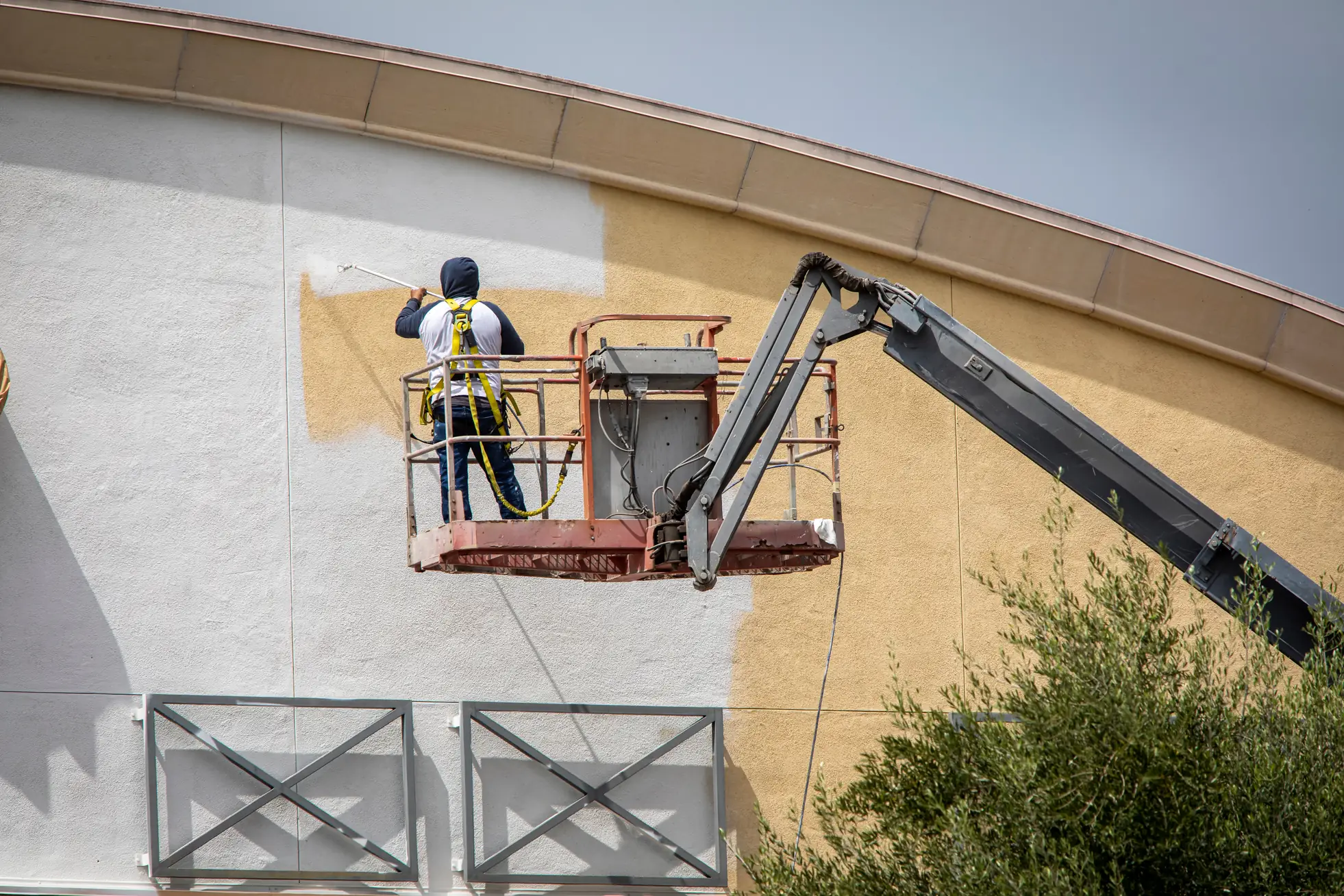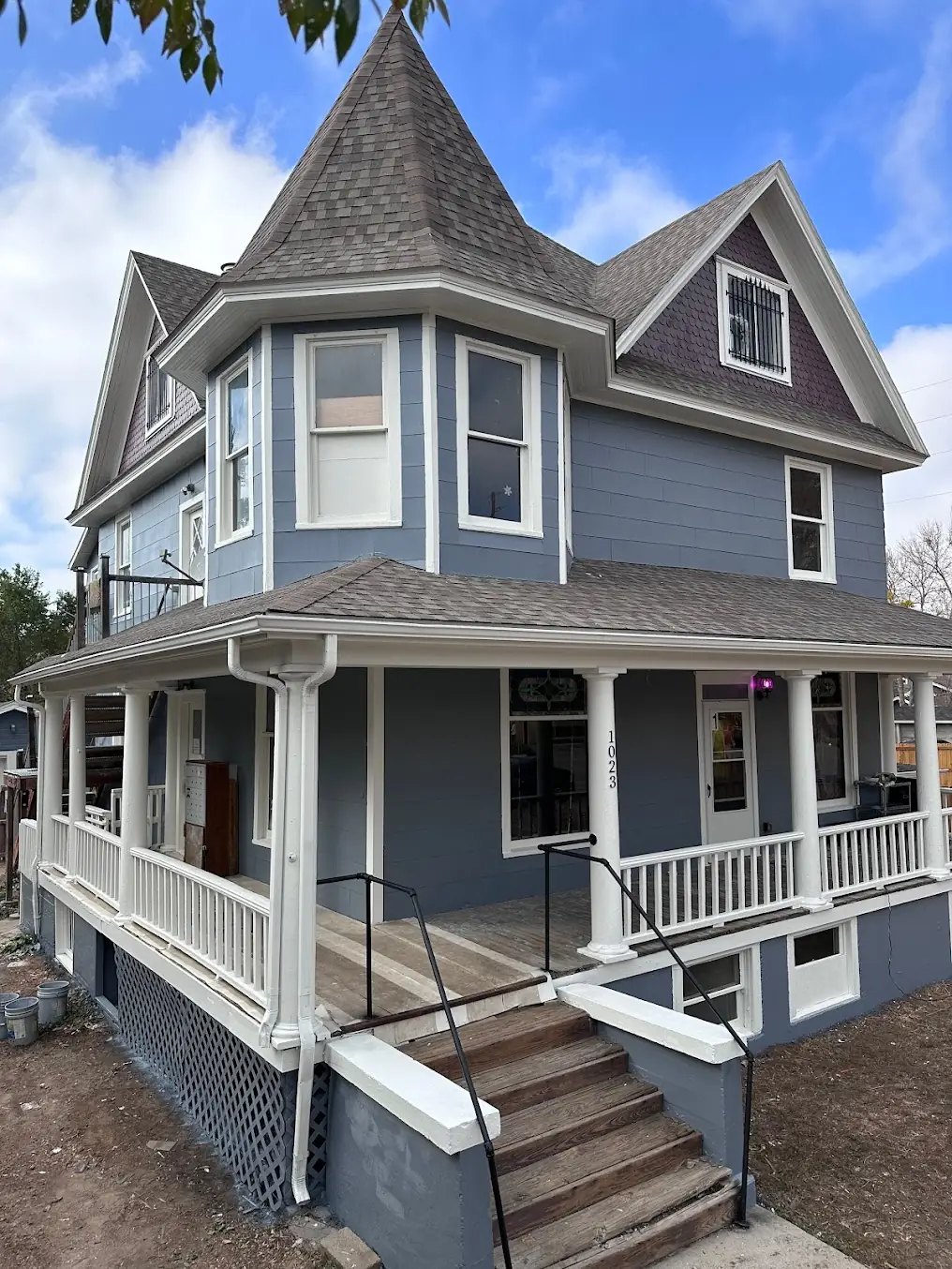Colorado's unique climate demands strategic timing for exterior painting projects to ensure lasting results and protection.
Share:

Summary:
Colorado weather doesn’t mess around. One day you’re enjoying 70-degree sunshine, the next you’re scraping ice off your windshield. This isn’t just inconvenient—it’s murder on exterior paint jobs that aren’t timed correctly.
Your paint needs specific conditions to bond with your home’s siding and create that protective barrier you’re paying for. Get the timing wrong, and you’ll watch your investment literally peel away within a year or two.
The difference between painting at the right time versus gambling with Colorado weather isn’t subtle. It’s the difference between protection that lasts a decade and a costly do-over that could have been avoided entirely.

Here’s what works in Larimer County: mid-May through early October gives you the most predictable conditions for exterior painting. During this window, you get consistent temperatures, manageable weather patterns, and the time your paint needs to cure properly.
Think of it as Colorado’s gift to homeowners. Temperatures stay in that perfect 50-90°F range where paint flows smoothly and bonds correctly. More importantly, overnight temperatures stay above 35°F—the magic number where paint can continue curing instead of freezing and failing to stick.
Colorado’s dry climate actually helps during these months. You don’t have the humidity problems that plague other regions, but you also avoid the bone-dry conditions that make paint cure too quickly and crack.
This timing sidesteps Colorado’s weather surprises too. Spring storms calm down by mid-May, and you’ll finish before winter returns with a vengeance. You’re working with the weather instead of fighting it.
Smart homeowners book their painting projects during winter and spring. We get booked solid during peak season, and waiting until summer often means settling for less ideal timing or rushed work.
Most homeowners think about daytime temperatures when planning exterior painting. That’s only half the story. The temperature that really matters is the coldest your fresh paint will face during its first 24-48 hours.
Drop below 35°F, and your paint stops doing what it’s supposed to do. The particles that should bond together to form a protective coating just can’t complete the process. You end up with paint that looks fine but won’t protect your home when Colorado weather gets rough.
This is why those beautiful 65-degree March afternoons are still too risky. Sure, it feels perfect for painting, but when temperatures plummet to 25°F that night, you’ve just wasted your money on a paint job that’s already compromised.
Your house’s surfaces matter too. That north-facing wall that never sees sun might be 20 degrees colder than the air temperature. We always check surface temperatures, not just what the thermometer says.
Cold paint is thick paint. It doesn’t flow smoothly, doesn’t level properly, and creates weak spots that Colorado’s freeze-thaw cycles will exploit. What should be a smooth protective barrier becomes a bumpy, vulnerable surface that starts failing within months.
This is why rushing the season backfires. Save a few weeks on your timeline, and you’ll pay for it with a paint job that needs redoing years earlier than it should.
Want live answers?
Connect with a LF Rosa Painting expert for fast, friendly support.
Each season in Colorado brings its own painting challenges and opportunities. Understanding these patterns helps you make smart decisions about when to start your project and what to expect from your painting contractor.
Spring tempts you with warming temperatures but delivers unpredictable storms. Summer offers stability but brings intense heat and afternoon thunderstorms. Fall provides another excellent window but with a ticking clock as winter approaches.
The key is matching your project timeline to Colorado’s weather realities, not your wishful thinking about when you’d prefer to get started.

Spring fever hits hard in Colorado. After months of winter, you’re ready to tackle outdoor projects the moment temperatures creep above freezing. But exterior painting requires patience—jumping the gun costs money.
March and early April are tempting but treacherous. Temperature swings of 40-50°F in a single day are normal, and late-season snowstorms can dump inches on your freshly painted surfaces. Even when it hits 60°F during the day, overnight lows often crash below that critical 35°F threshold.
Mid-May is when things stabilize. The risk of severe temperature drops decreases significantly, and weather patterns become predictable enough for successful exterior painting. You’ll still need to watch forecasts, but you’re working with odds instead of against them.
Starting in late spring does give your paint the entire summer to cure and harden before facing winter weather. This extended curing time can improve long-term durability—one reason why spring timing often outperforms fall applications.
The difference between early May and mid-May might seem trivial, but it’s often the difference between stable conditions and the tail end of spring’s chaos. We won’t start until conditions are truly reliable, even if it means disappointing eager customers.
Book early if you want prime spring timing. Painting contractors who understand Colorado weather fill their schedules fast, and the best ones won’t compromise quality for convenience.
Summer is peak painting season in Colorado, but it’s not without challenges. June through August offers the most stable weather, but intense sun and afternoon storms require smart planning from your painting contractor.
Extreme heat creates its own problems. When temperatures soar above 85°F, paint dries too quickly, preventing proper adhesion and leaving visible brush marks. We start early on east-facing surfaces and move to west-facing walls in the afternoon, using natural shade to maintain optimal conditions.
Colorado’s summer storms follow predictable patterns—clear mornings with potential afternoon thunderstorms. We monitor weather radar constantly and adjust our schedules accordingly. A sudden downpour on wet paint ruins hours of work and requires complete reapplication.
Fall offers another excellent window from September through early October. Temperatures moderate, storms become less frequent, and you might find better contractor availability. Many homeowners overlook fall painting, creating opportunities for both scheduling and pricing.
The challenge with fall timing is the compressed timeline. You’re racing against winter’s arrival, and an early cold snap can end the painting season abruptly. October can be gorgeous one day and freezing the next.
Fall-painted surfaces also have less time to cure before facing harsh winter weather. While properly applied paint will cure adequately, it won’t have the extended hardening time that spring applications enjoy.
Smart homeowners book during peak season but stay flexible with specific dates. Weather delays are normal and expected—contractors who guarantee rigid schedules regardless of conditions are often cutting corners on quality.
Timing your exterior painting project correctly in Larimer County isn’t about convenience—it’s about protecting your biggest investment and ensuring your home looks great for years to come. The mid-May through early October window exists for solid reasons, and working within these parameters dramatically improves your odds of success.
Weather conditions matter more than calendar dates. A late spring or early winter can shift these windows, and experienced contractors adjust accordingly. The key is working with professionals who understand Colorado’s climate and won’t sacrifice quality for schedule convenience.
When you’re ready to give your home the protection and curb appeal it deserves, choose a painting contractor who respects Colorado’s weather patterns and has the experience to deliver lasting results. We’ve been helping Larimer County homeowners make these critical timing decisions for years, ensuring every project is scheduled for optimal results and maximum durability.
Article details:
Share:
Continue learning: